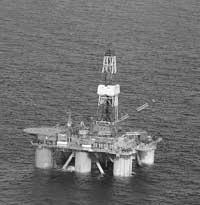Vertical waves searching for deposits
The search for oil and gas deposits in the seabed is carried out by the technique of, among others, the emission of waves by a sound source through the terrestrial surface, the shock of waves against rocks and their reflection towards the terrestrial surface, the measurement of the characteristics of the reflected waves and the composition of the interior of the earth according to these characteristics.

The techniques used today only allow the generation of horizontal waves. However, vertical waves are needed to obtain information. Scientists from the National Engineering and Environment Laboratory of Idaho and the University of Arkansas have invented two vertical wave generator systems. The RCS (Regenerative Combustion Source) system uses hydrogen gas for wave generation.
Firstly, by means of an electric ignition system, hydrogen drying is performed. Subsequently, the waves generated by the explosion extend along the seabed. The CDS (Capacitive Discharge Source) system, for its part, generates an electric arc that forms a bubble full of steam and forms the wave.





